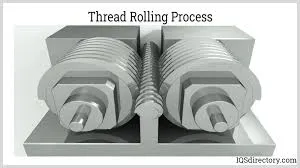
-
 Afrikaans
Afrikaans -
 Albanian
Albanian -
 Amharic
Amharic -
 Arabic
Arabic -
 Armenian
Armenian -
 Azerbaijani
Azerbaijani -
 Basque
Basque -
 Belarusian
Belarusian -
 Bengali
Bengali -
 Bosnian
Bosnian -
 Bulgarian
Bulgarian -
 Catalan
Catalan -
 Cebuano
Cebuano -
 Corsican
Corsican -
 Croatian
Croatian -
 Czech
Czech -
 Danish
Danish -
 Dutch
Dutch -
 English
English -
 Esperanto
Esperanto -
 Estonian
Estonian -
 Finnish
Finnish -
 French
French -
 Frisian
Frisian -
 Galician
Galician -
 Georgian
Georgian -
 German
German -
 Greek
Greek -
 Gujarati
Gujarati -
 Haitian Creole
Haitian Creole -
 hausa
hausa -
 hawaiian
hawaiian -
 Hebrew
Hebrew -
 Hindi
Hindi -
 Miao
Miao -
 Hungarian
Hungarian -
 Icelandic
Icelandic -
 igbo
igbo -
 Indonesian
Indonesian -
 irish
irish -
 Italian
Italian -
 Japanese
Japanese -
 Javanese
Javanese -
 Kannada
Kannada -
 kazakh
kazakh -
 Khmer
Khmer -
 Rwandese
Rwandese -
 Korean
Korean -
 Kurdish
Kurdish -
 Kyrgyz
Kyrgyz -
 Lao
Lao -
 Latin
Latin -
 Latvian
Latvian -
 Lithuanian
Lithuanian -
 Luxembourgish
Luxembourgish -
 Macedonian
Macedonian -
 Malgashi
Malgashi -
 Malay
Malay -
 Malayalam
Malayalam -
 Maltese
Maltese -
 Maori
Maori -
 Marathi
Marathi -
 Mongolian
Mongolian -
 Myanmar
Myanmar -
 Nepali
Nepali -
 Norwegian
Norwegian -
 Norwegian
Norwegian -
 Occitan
Occitan -
 Pashto
Pashto -
 Persian
Persian -
 Polish
Polish -
 Portuguese
Portuguese -
 Punjabi
Punjabi -
 Romanian
Romanian -
 Russian
Russian -
 Samoan
Samoan -
 Scottish Gaelic
Scottish Gaelic -
 Serbian
Serbian -
 Sesotho
Sesotho -
 Shona
Shona -
 Sindhi
Sindhi -
 Sinhala
Sinhala -
 Slovak
Slovak -
 Slovenian
Slovenian -
 Somali
Somali -
 Spanish
Spanish -
 Sundanese
Sundanese -
 Swahili
Swahili -
 Swedish
Swedish -
 Tagalog
Tagalog -
 Tajik
Tajik -
 Tamil
Tamil -
 Tatar
Tatar -
 Telugu
Telugu -
 Thai
Thai -
 Turkish
Turkish -
 Turkmen
Turkmen -
 Ukrainian
Ukrainian -
 Urdu
Urdu -
 Uighur
Uighur -
 Uzbek
Uzbek -
 Vietnamese
Vietnamese -
 Welsh
Welsh -
 Bantu
Bantu -
 Yiddish
Yiddish -
 Yoruba
Yoruba -
 Zulu
Zulu
Optimizing Setup Procedures for Thread Rolling Machines in Manufacturing Environments
Setting Up a Thread Rolling Machine in the Factory
In modern manufacturing, the precision and efficiency of production processes are paramount. Among the various techniques employed in the machining process, thread rolling stands out as a highly effective method for creating threaded fasteners. Setting up a thread rolling machine in a factory requires careful planning, precise execution, and ongoing maintenance to ensure optimal performance and high-quality output.
Understanding Thread Rolling
Thread rolling is a cold working process that deforms the material to form threads, making it different from traditional cutting methods. The process typically utilizes two or three dies that rotate and exert pressure on the workpiece, resulting in the desired thread profile. This technique is not only faster and more efficient than cutting but also enhances the mechanical properties of the material due to work hardening.
Initial Planning and Preparation
Before setting up a thread rolling machine, factory managers must first analyze the production requirements. This includes assessing the types of threads needed, the dimensions of the parts, and the material specifications. A comprehensive understanding of the production volume and time constraints is also essential.
Once these factors have been established, the next step is to select the appropriate thread rolling machine. Various types of machines cater to different thread sizes and materials, such as flat dies and cylindrical dies, each with its specific applications. It is crucial to choose a machine that aligns with the factory's production goals and capabilities.
Machine Setup Process
Setting up the machine involves several critical steps
thread rolling machine setup factory

1. Installation Initially, the thread rolling machine must be installed in a suitable location within the factory. The area should have adequate space for operation and maintenance and access to power and other resources.
2. Alignment and Calibration Proper alignment is vital for achieving accurate thread formation. The machine components, including the dies and feed mechanism, must be precisely calibrated according to the manufacturer's specifications. This involves adjusting the dies and ensuring the workpiece is correctly positioned.
3. Choosing the Right Dies The selection of dies is critical as they determine the thread profile and quality. Ensuring that the dies are clean and free from any defects is essential for preventing issues during production.
4. Testing and Quality Control Before commencing full-scale production, it is vital to conduct test runs. This phase allows for evaluating the operation of the machine and the quality of the threads produced. Adjustments may be necessary based on the test results to achieve the desired specifications.
5. Regular Maintenance Once the machine is operational, regular maintenance is essential to sustain productivity. This includes routine inspections, lubrication of moving parts, and timely replacement of worn-out dies. Developing a maintenance schedule based on the production volume can help prevent unexpected downtimes.
Training and Safety
Equally important is the training of staff who will operate the thread rolling machine. Operators should be familiar with the machine's functionalities, potential hazards, and troubleshooting techniques. Implementing safety protocols is crucial to minimize the risk of accidents and ensure a safe working environment.
Conclusion
Setting up a thread rolling machine in a factory is a multifaceted process that requires careful planning, execution, and ongoing maintenance. By understanding the requirements of the production process, selecting the right equipment, and ensuring the proper training of personnel, manufacturers can enhance their production efficiency and product quality. As industries continue to evolve with the advancements in manufacturing technologies, thread rolling remains a vital method for producing reliable and robust threaded fasteners.
